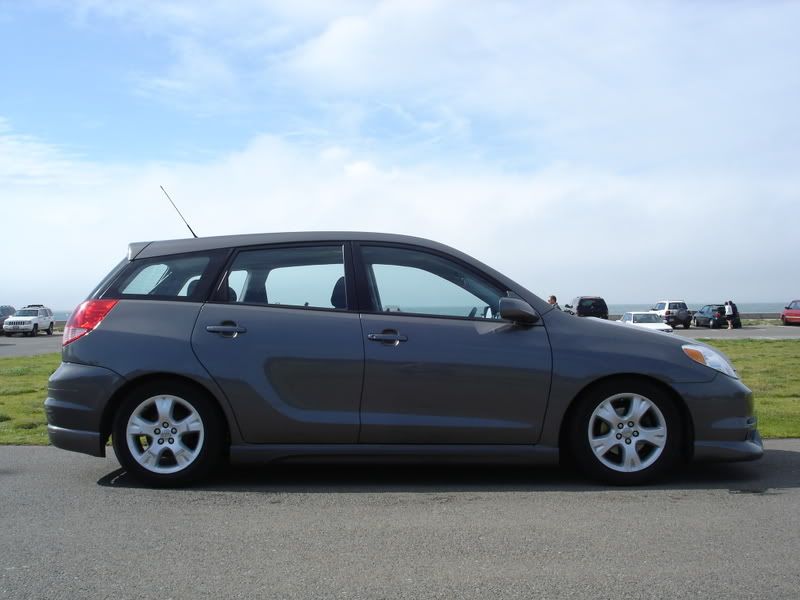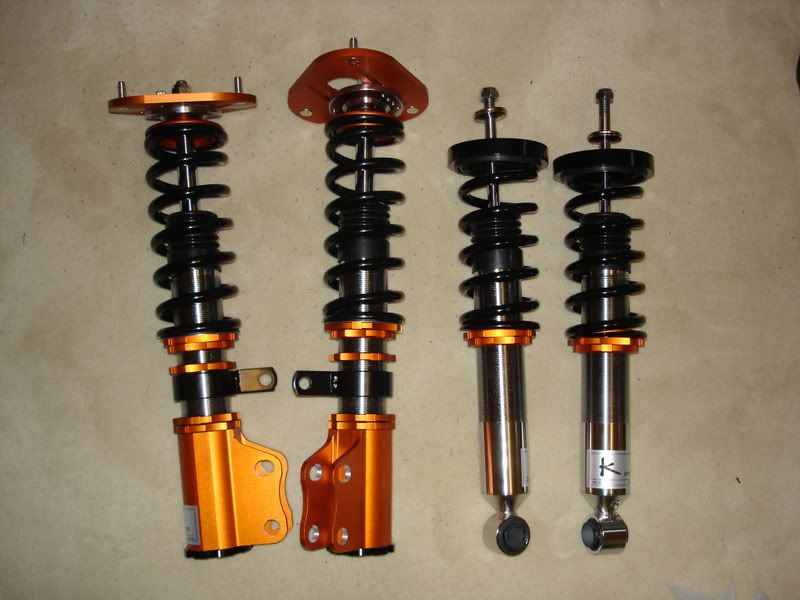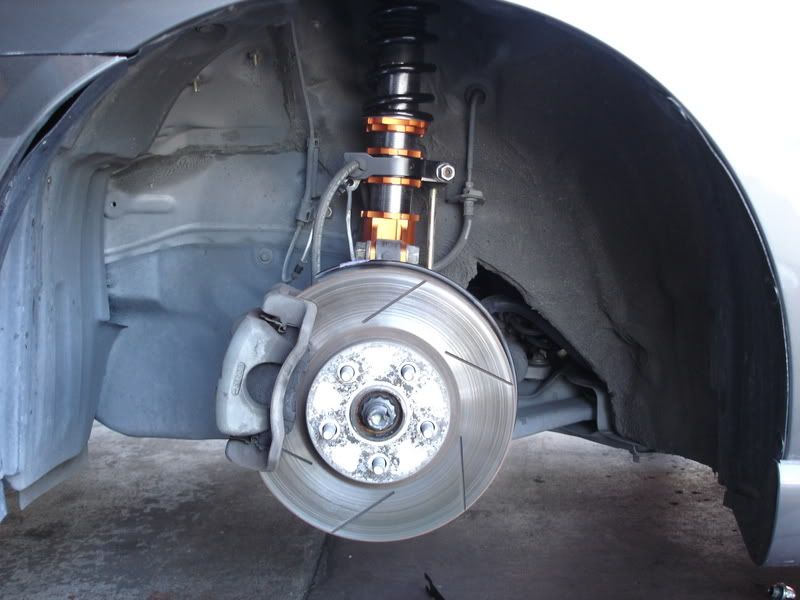My car needed new shocks about five months ago. Fortunately, there's group buy on a coilover system that I can get into. I love the increased performance. Probably the dampers aren't stiff enough for frequent track use, but enough for me to have fun for spirited driving. I find the coilover pretty streetable, which is nice.
Enough of my intro. I have a question regarding preload. Before that, let me show you guys a few pics (I guess it may help, but couldn't hurt)



http://lh4.google.com/image/vi ... xyNeCEw/s800/P6021372.jpg
As you can see, the fronts has a pillowball top mount (adjusts camber), adjustable endlink mount (not real sure what's the true function of it) and adjustable lower mount (ride height for the most part). The rear is only ride height adjustable. All shocks have adjustable damping (36 levels). Bump and rebound are adjusted simultaneously.
The car lose about half of its available stroke when it's on the ground. The question is if I decide to make minor ride height change (I guess within half an inch, may be a bit more) by turning the spring seat/perch, do I increase preload? If I change the rear ride height, will that increase spring preload at the same time? I talked to the manufacturer's tech support. They said if I change the ride height through the front spring seat instead of the lower mount, I'm changing preload. They also say changing the rear ride height in any means will change preload also. I don't think that's right since I still have plenty of travel left before extra pressure can be put on the springs for the front, and I can't put extra pressure for the rear spring unless I go as high as it can go. What's the true answer?
Note: The manufacture default for the front spring location is where the spring has no room to move up and down easily without putting tension to it, just like the pic for the fronts before they go on the car. The rear has no default location. The stock top cap is used for the rear coilover as part of the assembly.
Enough of my intro. I have a question regarding preload. Before that, let me show you guys a few pics (I guess it may help, but couldn't hurt)



http://lh4.google.com/image/vi ... xyNeCEw/s800/P6021372.jpg
As you can see, the fronts has a pillowball top mount (adjusts camber), adjustable endlink mount (not real sure what's the true function of it) and adjustable lower mount (ride height for the most part). The rear is only ride height adjustable. All shocks have adjustable damping (36 levels). Bump and rebound are adjusted simultaneously.
The car lose about half of its available stroke when it's on the ground. The question is if I decide to make minor ride height change (I guess within half an inch, may be a bit more) by turning the spring seat/perch, do I increase preload? If I change the rear ride height, will that increase spring preload at the same time? I talked to the manufacturer's tech support. They said if I change the ride height through the front spring seat instead of the lower mount, I'm changing preload. They also say changing the rear ride height in any means will change preload also. I don't think that's right since I still have plenty of travel left before extra pressure can be put on the springs for the front, and I can't put extra pressure for the rear spring unless I go as high as it can go. What's the true answer?
Note: The manufacture default for the front spring location is where the spring has no room to move up and down easily without putting tension to it, just like the pic for the fronts before they go on the car. The rear has no default location. The stock top cap is used for the rear coilover as part of the assembly.